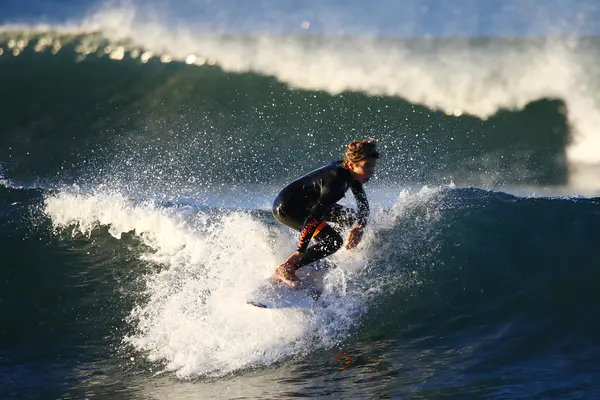Surfing is an exhilarating sport that combines skill, strength, and a deep connection with the ocean. One of the essential aspects of surfing is understanding the lineup. The lineup is where surfers wait for waves and decide which waves to catch. Knowing how to navigate the lineup is crucial for both safety and maximizing your surfing experience.
Understanding the Lineup
Definition of the Lineup
The lineup is the area where surfers sit on their boards, waiting for waves to break. It’s usually located just beyond the breaking waves. Surfers gather here to position themselves for the best waves.
Importance of the Lineup
The lineup is important because it determines where and when surfers catch waves. It helps surfers find the optimal spot to catch the best waves. Properly positioning yourself in the lineup can make the difference between catching a great wave and missing it entirely.
Components of the Lineup
Peak
The peak is the highest point of the wave. It’s where the wave begins to break. Surfers aim to position themselves near the peak to catch the wave at its most powerful point.
Shoulder
The shoulder is the part of the wave that extends away from the peak. It’s less steep and powerful than the peak. Surfers may move to the shoulder to avoid collisions or to catch smaller waves.
Impact Zone
The impact zone is where the wave breaks with the most force. Surfers try to avoid this area to prevent being caught in the crashing wave.
Navigating the Lineup
Paddling Out
Paddling out is the process of moving from the shore to the lineup. This involves navigating through breaking waves. Surfers use a combination of paddling and duck diving to reach the lineup.
Duck Diving
Duck diving is a technique used to dive under oncoming waves while paddling out. This helps surfers avoid being pushed back toward the shore by the breaking waves.
Turtle Rolling
Turtle rolling is an alternative to duck diving, used by longboard surfers. It involves flipping the board upside down and letting the wave pass over it.
Positioning in the Lineup
Once in the lineup, surfers need to find the right position. This involves observing the waves, other surfers, and the movement of the ocean.
Reading the Waves
Surfers look for patterns in the waves to determine the best spot to catch them. They watch for the peak and assess the size and shape of the waves.
Watching Other Surfers
Observing other surfers can help you understand where the best waves are breaking. It also helps you avoid collisions and respect the priority of other surfers.
Etiquette in the Lineup
Respecting Priority
Surfing has a system of priority to determine who has the right to catch a wave. The surfer closest to the peak has priority. It’s important to respect this to avoid conflicts.
Communicating with Other Surfers
Clear communication helps prevent accidents and misunderstandings. Use hand signals and verbal cues to indicate your intentions.
Avoiding Drop-Ins
A drop-in is when a surfer catches a wave that another surfer is already riding. This is considered poor etiquette and can be dangerous.
Types of Waves and the Lineup
Beach Breaks
Beach breaks are waves that break over a sandy bottom. The lineup at beach breaks can shift with changes in the sandbars.
Reef Breaks
Reef breaks occur over rocky or coral reefs. The lineup at reef breaks is usually more consistent, but the waves can be more powerful.
Point Breaks
Point breaks occur when waves break along a point of land. The lineup at point breaks is often more organized, with waves breaking in a predictable pattern.
Challenges in the Lineup
Crowded Lineups
Popular surf spots can have crowded lineups. This makes positioning and catching waves more challenging.
Changing Conditions
The ocean is constantly changing. Tides, wind, and swell can all affect the lineup. Surfers need to be adaptable and observant.
Navigating Currents
Currents can push surfers out of position in the lineup. Understanding and navigating these currents is crucial for maintaining your spot.
See Also: Which Beach Has Water Sports in Goa?
Improving Your Lineup Skills
Practice and Experience
Like any skill, improving your lineup abilities takes practice. Spend time in the water and learn from each session.
Observing Experienced Surfers
Watch how experienced surfers navigate the lineup. Pay attention to their positioning, paddling techniques, and wave selection.
Taking Surf Lessons
Professional surf lessons can provide valuable insights into lineup navigation. Instructors can offer personalized tips and feedback.
Safety in the Lineup
Wearing the Right Gear
Proper surf gear, including a leash and wetsuit, enhances safety. The leash keeps you connected to your board, and the wetsuit provides buoyancy and protection.
Knowing Your Limits
Be honest about your skill level and choose appropriate surf spots. Don’t attempt waves that are beyond your ability.
Staying Aware
Constantly scan the water and be aware of your surroundings. Look out for other surfers, waves, and potential hazards.
Conclusion
Understanding the lineup in surfing is fundamental for a successful and enjoyable surfing experience. By learning the components of the lineup, navigating it effectively, and respecting surf etiquette, you can improve your wave-catching abilities and stay safe in the water. Whether you’re a beginner or an experienced surfer, mastering the lineup is a continuous process that enhances your connection with the ocean and the thrill of surfing.

